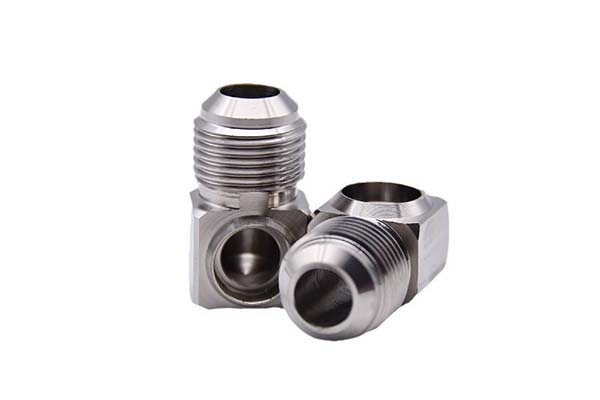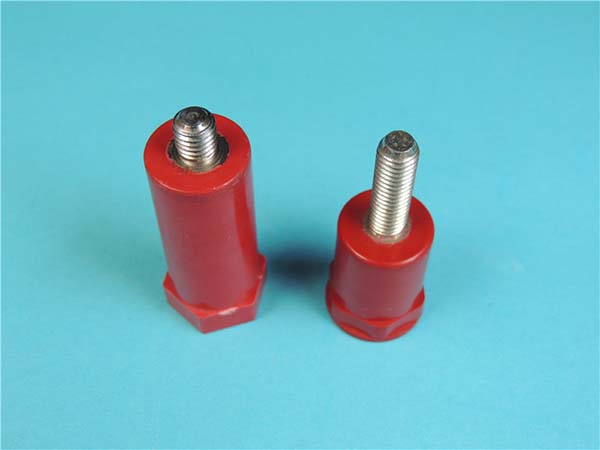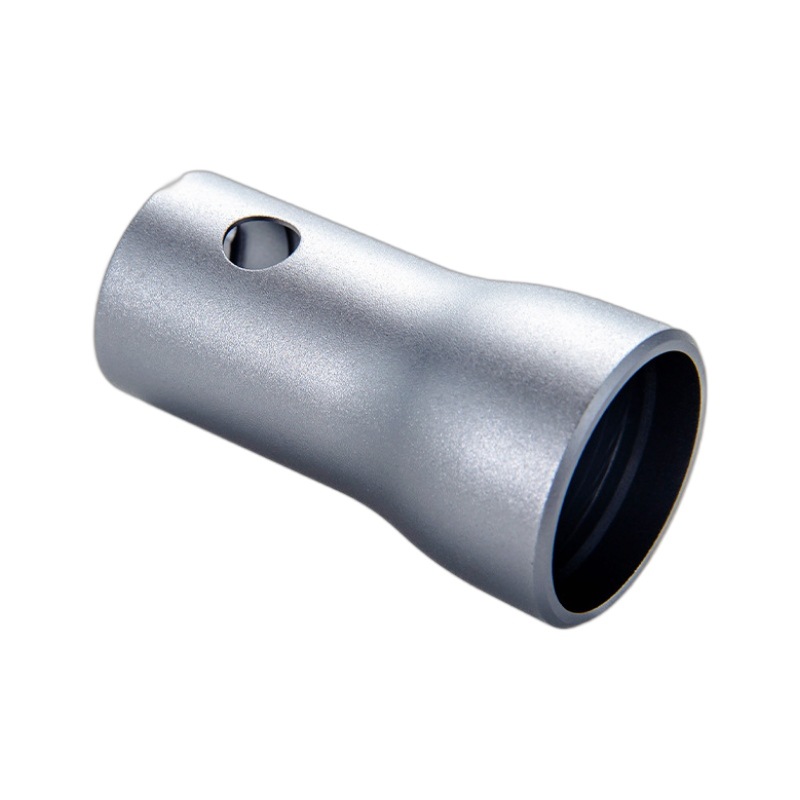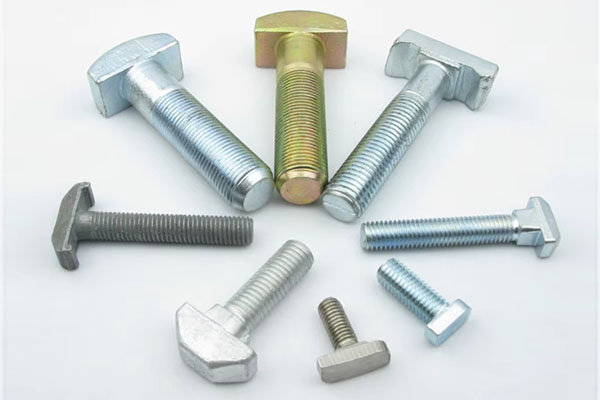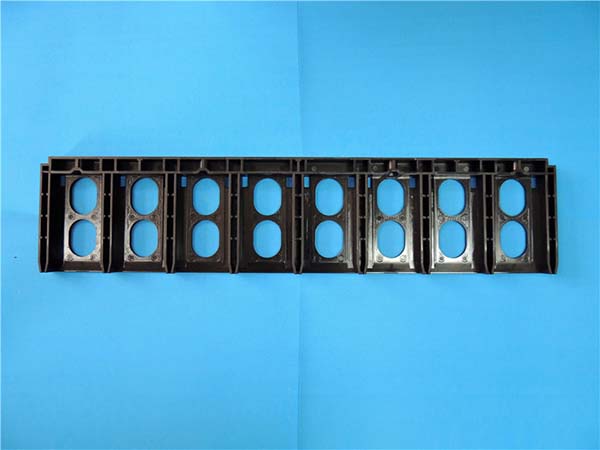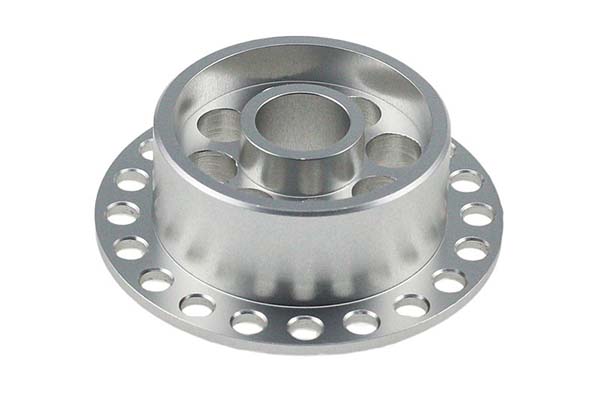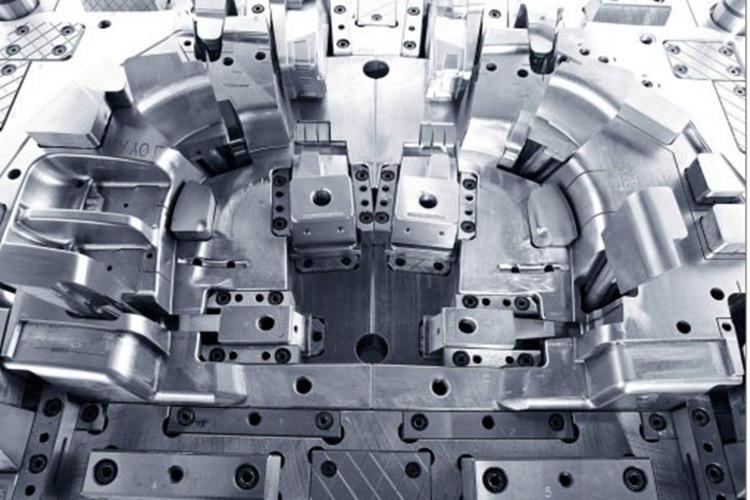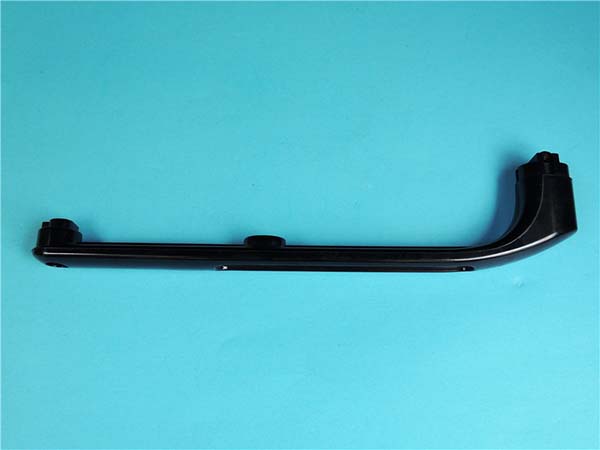What Is Broach Milling?
Broach milling is a modern cutting process that uses a special cutting tool on a computer-controlled machine to create internal shapes like keyways and splines. It works by making a series of straight, small cuts. Unlike old-style broaching, which needs a special machine to push or pull a long tool with many teeth through a part in one pass, broach milling can be done on regular computer-controlled machines that most shops already have. This method turns a spinning cutting machine into a straight-line cutting machine for specific jobs, giving shops both accuracy and flexibility.
The main benefit of broach milling is that it combines several operations into one and makes manufacturing simpler. By removing the need for extra operations on special equipment, it makes the whole production process smoother. The key benefits that make this process essential in modern shops include:
- Flexibility: One broach milling tool holder can machine different internal features, including keyways, splines of different standards (DIN 5480, DIN 5482, ANSI B92.1), and custom grooves, often just by changing a small, standard insert.
- Cost Savings: It avoids the huge investment needed for a special broaching machine and the high cost of custom, single-use broach bars. This makes internal keying possible for any shop with a good computer-controlled machine.
- Accuracy: Modern computer-controlled machines provide excellent control over movement and positioning. This built-in accuracy allows broach milling to achieve tight tolerances and excellent surface finishes that consistently meet demanding engineering requirements.
- Flexibility: Perhaps its biggest advantage over traditional methods is the ability to machine blind holes (holes that don't go all the way through). The process can be programmed to stop at an exact depth, which is impossible with conventional through-broaching.
This guide will provide the practical, detailed knowledge needed to successfully use, improve, and fix problems with the broach milling process in your operations, turning a challenging task into a routine and profitable capability.
Computer-Controlled vs. Traditional Broaching
Making a smart decision between using computer-controlled broach milling and relying on traditional broaching requires a clear understanding of the basic differences in machinery, cost, and application. Traditional broaching is a high-speed, high-volume process where a long tool with teeth that get progressively taller is pushed or pulled through a workpiece. Computer-controlled broach milling, made possible by special tool holders, does the same job through a series of programmed, small cuts on a machine you already own.
The choice between these two methods depends on factors like production volume, part complexity, and capital investment strategy. For a direct comparison, we've broken down the important features of each process.
| Feature | Traditional Broaching | CNC Broach Milling (with Broach Holders) |
| Machine Requirement | Dedicated Broaching Machine | Standard CNC Mill or Live-Tooling Lathe |
| Tooling Cost | High initial investment for a single, custom broach | Moderate investment for a holder and standard inserts |
| Setup Time | Long and specialized, requiring dedicated fixtures | Fast, similar to any other standard CNC tool change |
| Application Flexibility | Low; one broach is designed for one specific feature | High; one holder can use multiple insert sizes/forms |
| Blind Hole Machining | Not possible | Ideal application and a primary strength |
| Cycle Time (High Volume) | Very fast per part (seconds) | Slower per part, but faster overall process time |
| Required Operator Skill | Specialized operator for a dedicated machine | Standard CNC operator and programmer skills |
Looking at this comparison shows different use cases. Traditional broaching is still best for extremely high-volume production of a single, standard part with a through-hole. Its per-part cycle time is unmatched. However, its lack of flexibility and high initial cost make it impractical for most machine shops.
Computer-controlled broach milling works best for small-to-medium batch sizes, prototyping, and parts with multiple features. For example, while traditional broaching might produce a keyway in under 10 seconds, the overall process time can extend for hours when you account for moving a batch of parts to a secondary machine, setting it up, and then returning them for further operations. A broach milling cycle might take 30-60 seconds per part, but it happens within the primary machining cycle. This "done-in-one" approach eliminates hours of logistical delay, queue time, and additional handling, drastically reducing the total lead time and the potential for scrap from multiple setups. It makes the ability to create internal features available to any modern manufacturing environment in a strategic and cost-effective way.
Broaching on Live-Tool Lathes
Adding broach milling to computer-controlled lathes equipped with live tooling represents the peak of manufacturing efficiency. This combination unlocks the potential for "one-hit" or "done-in-one" machining, where a complex part is completed in a single clamping. This approach not only reduces cycle time but also dramatically improves part accuracy by eliminating the concentricity and location errors that can be introduced with each additional setup.
Using broach milling on a lathe is a straightforward process when the correct steps and considerations are followed. Here is a practical guide to setting up and programming the operation.
1. Tool Holder Selection: The first decision is choosing between an axial and a radial live tool holder. An *axial holder* points the broaching tool parallel to the Z-axis, making it ideal for cutting keyways inside the bore of a part. A *radial holder* points the tool perpendicular to the Z-axis, which can be used for features on the face of a part. For most internal keyways and splines, an axial holder is the standard choice. Always ensure there is adequate clearance between the holder, the tool, and the workpiece, especially near the chuck jaws.
2. Workholding Rigidity: The straight cutting forces in broach milling can be significant. Any bending in the workpiece will result in dimensional errors, poor surface finish, and potential chatter. It is crucial to ensure rigid workholding. Grip the part with maximum surface contact in the chuck jaws. If the lathe has a sub-spindle, supporting the part from both ends provides the highest level of rigidity, especially for long or thin-walled components.
3. Spindle Orientation and Locking: Unlike turning, the main spindle must be stationary and rigidly locked during the cut. This is done using the C-axis. The program will first command the C-axis to orient the part to the correct angle for the keyway. Then, a machine-specific M-code for *C-axis lock* or spindle brake must be activated. This is a critical step; failure to lock the spindle will lead to part movement and catastrophic tool failure.
4. Programming the Cut: The cutting motion itself is simple. For an axial holder, the Z-axis performs the straight cut. The basic G-code sequence involves feeding the Z-axis along the length of the keyway at a programmed feed rate and depth of cut. For machining splines, the process is repeated: after each pass, the tool retracts, the C-axis unclamps, rotates to the next spline position, re-clamps, and the next cut begins.
*Pro-Tip: Always program a small relief move away from the finished wall of the keyway before retracting the tool fully out of the bore. For example, if cutting with the X-axis, after the Z-axis cut is complete, move the X-axis by 0.1mm before retracting in Z. This prevents the insert from dragging on the finished surface during the rapid retract, which can create drag marks and degrade the surface finish.*
By mastering this setup on a live-tool lathe, a shop can transform a multi-machine, multi-operation job into a single, efficient, and highly accurate process.
Improving Blind Keyway Paths
Machining a blind keyway—one that does not exit the other side of the part—is a common requirement that presents significant challenges. It is also where broach milling shows its most distinct advantage over traditional methods. The primary difficulties in blind hole applications are chip removal and preventing the tool from crashing into the bottom of the pocket. A well-designed toolpath is not just helpful; it is essential for success. We have found the following step-by-step method to be the most effective for producing quality blind keyways while maximizing tool life.
Step 1: The Relief Groove
Before any broaching begins, the first and most critical step is to machine a relief feature at the blind end of the keyway. This is typically a groove or a small cross-hole, wider and deeper than the keyway itself, created with a standard endmill or drill. This feature serves two vital purposes: it gives the broaching tool a place to "cut air" at the end of its stroke, preventing it from bottoming out, and it creates a channel for chips and coolant to escape. Without a relief groove, chips will pack into the corner, leading to tool breakage and a damaged part.
Step 2: The Pecking Toolpath
A straight, single-pass cut is not viable for deep or blind keyways due to chip packing. The solution is a "pecking" or "nibbling" toolpath that breaks the operation into a series of manageable cuts with intermediate retractions. This strategy ensures chips are cleared from the cutting zone. The sequence of motion is as follows:
1. Rapid the tool to the start position just outside the hole.
2. Feed in along the Z-axis for a short distance (the "peck").
3. Retract the tool slightly within the keyway (e.g., 1mm back in Z). This small move helps break the chip.
4. Rapid the tool completely out of the hole to the initial start plane. This action allows coolant to flush the pocket and removes the chip.
5. Rapid back into the hole to the last peck depth plus a small overlap to ensure a smooth transition.
6. Feed in for the next peck.
7. Repeat this cycle until the final depth is reached.
The following diagram illustrates the difference between a standard path and an improved pecking path for a blind keyway:
(A simple line drawing would be inserted here, showing a straight line for a standard path and a saw-tooth-like pattern for the pecking path, with arrows indicating the direction of motion.)
Step 3: Improving Depth of Cut (DOC)
The depth of cut per pass (or peck) is a critical variable that depends on the material, tool rigidity, and machine capability. An overly aggressive DOC will lead to excessive tool pressure, chatter, and potential failure. Too small a DOC will result in rubbing and premature tool wear. Our experience shows that for tough materials like 316 Stainless Steel or Inconel, starting with a DOC of 0.05mm to 0.08mm per pass is a safe and effective approach. For softer materials like 6061 Aluminum or free-machining brass, you can be more aggressive, starting around 0.15mm to 0.20mm per pass. Always listen to the machine; an audible change in cutting sound is often the first indicator that parameters need adjustment.
Step 4: Active Chip Management
Even with a pecking toolpath, active chip management is crucial. The use of high-pressure through-tool coolant, if available, is the ideal solution, as it directs a powerful jet of fluid precisely at the cutting edge, forcefully removing chips from the blind pocket. If through-tool coolant is not an option, position external coolant nozzles to be aimed directly into the bore to provide as much flushing action as possible. In some difficult cases, a programmed "air blast" cycle can also be used to clear chips between passes.
Choosing Inserts and Coatings
The performance of any broach milling operation is directly tied to the selection of the cutting insert. The insert is where the physics of machining happens, and choosing the correct combination of carbide substrate and advanced coating for your specific workpiece material is what separates a smooth, profitable job from a struggle with broken tools and scrapped parts. The substrate provides the toughness and strength, while the coating provides thermal protection and lubricity.
TiAlN (Titanium Aluminum Nitride) Coating
- Best for: Carbon Steels, Alloy Steels, Stainless Steels, and High-Temperature Alloys (e.g., Inconel, Titanium).
- Why it works: TiAlN is the workhorse coating for broach milling. Its primary benefit is its excellent thermal stability and high hardness at elevated temperatures. As the tool heats up during the cut, the aluminum in the coating forms a microscopic layer of aluminum oxide (Al₂O₃) at the tip. This self-generating ceramic layer acts as a thermal barrier, protecting the carbide substrate underneath from the intense heat generated when cutting tough, abrasive materials. This makes it the ideal choice for a general-purpose job shop environment where materials frequently change.
DLC (Diamond-Like Carbon) Coating
- Best for: Aluminum, Brass, Copper, Magnesium, and other soft, non-ferrous materials. It is also effective on some polymers and composites.
- Why it works: The defining characteristic of a DLC coating is its extremely low coefficient of friction. When machining soft, gummy materials like aluminum, the primary failure mode is often "built-up edge" (BUE), where workpiece material welds itself to the cutting edge. This leads to poor surface finish, inaccurate dimensions, and eventual tool failure. The ultra-slick surface of a DLC coating prevents this adhesion, allowing chips to flow smoothly across the tool face.
- Important Note: Do not use DLC coatings on ferrous materials (steels or cast iron). At the high temperatures generated when cutting steel, a chemical reaction occurs between the carbon in the coating and the iron in the workpiece, causing the coating to rapidly degrade and fail.
Uncoated Carbide
- Best for: Certain plastics, composites, and some very specific non-ferrous applications where an extremely sharp edge is paramount.
- Why it works: Any coating process, no matter how advanced, adds a slight rounding to the cutting edge, typically on the order of a few microns. For some soft materials or applications requiring a razor-sharp finish, an uncoated insert provides the sharpest possible edge. However, without the protection of a coating, the carbide is directly exposed to heat and abrasion, meaning tool life will be significantly shorter in most metal-cutting applications. It should be considered a specialty choice rather than a default.
By taking a moment to match the insert to the material, you can dramatically improve process reliability. Choosing the right coating can often double or triple insert life compared to an incorrect choice, turning a difficult job into a profitable one.
Fixing Broach Milling Chatter
Chatter, or self-excited vibration, is one of the most persistent and destructive problems in any machining process, and broach milling is no exception. It shows up as a loud, high-pitched noise and leaves a distinctive wave-like pattern on the machined surface. Chatter not only ruins surface finish and dimensional accuracy but also leads to chipping and catastrophic failure of the cutting insert. Diagnosing and solving chatter requires a systematic approach based on an understanding of its root causes. We use a "Symptom -> Cause -> Solution" method to quickly resolve the issue.
1. Symptom: High-Pitched Whine & Poor Wavy Finish
- *Likely Cause:* Lack of rigidity in the tool, workpiece, or machine setup. Vibration is finding the weakest link in the system.
- *Solutions:*
- Start with the tool. Use the shortest possible broach milling holder that the job allows. Every extra inch of overhang multiplies deflection.
- Examine the workholding. Ensure the workpiece is clamped as securely as possible and as close to the chuck jaws or vise as feasible. For long parts on a lathe, use a tailstock or sub-spindle for support. We've often found that simply moving the part 1 inch closer to the chuck jaws can eliminate chatter entirely.
- Check the machine itself. Worn spindle bearings or loose machine axis gibs can be a source of vibration that only appears under cutting load.
2. Symptom: Chipping on the Insert's Cutting Edge
- *Likely Cause:* The cutting parameters are too aggressive for the setup's rigidity, or the insert geometry is incorrect.
- *Solutions:*
- Reduce the depth of cut (DOC) per pass. This is the most effective way to reduce tool pressure. Cut the DOC by 30-50% and listen to the result. If the chatter subsides, you can incrementally increase it again to find the new stable limit.
- Verify the feed rate. The linear feed rate must be appropriate for the material being cut. Consult the tool manufacturer's recommendations as a starting point.
- Check the insert geometry. Some inserts are available with a reinforced cutting edge (a small T-land or hone) designed for heavy cuts or interrupted cuts in hard materials. Using a razor-sharp insert in a high-vibration environment can lead to immediate chipping.
3. Symptom: The Entire Tool is Vibrating Violently
- *Likely Cause:* This often points to an issue with spindle locking on a live-tool lathe. The C-axis is not being held rigidly enough to counteract the linear cutting force.
- *Solution:* Because broach milling is a linear path, spindle RPM is not used for cutting. However, the main spindle must be rigidly locked in position. If your machine's spindle lock is hydraulic, ensure it is fully engaged and that pressure is adequate. If it uses a C-axis brake, verify in your program that the M-code to engage the brake is active *before* the tool engages the material. Any rotational play in the spindle will be amplified into severe vibration at the tool tip.
The Future of Broaching
Broach milling has firmly established itself as a cornerstone of modern manufacturing. By integrating the ability to create precise internal features directly into the computer-controlled milling and turning environment, it eliminates operational bottlenecks and unlocks new levels of efficiency. We have seen how its versatility on standard computer-controlled machines, its unique capability to machine blind holes, and its overall process efficiency through the reduction of setups provide a decisive competitive advantage.
By mastering the key pillars of this process—improving toolpaths for challenging features, selecting the correct material-specific tooling, and systematically fixing issues like chatter—any machine shop can confidently and profitably implement this technology. As computer-controlled machines become more powerful and multi-functional, integrated processes like broach milling are no longer a niche specialty. They are a fundamental component of lean, agile, and cost-effective manufacturing for the years to come.
